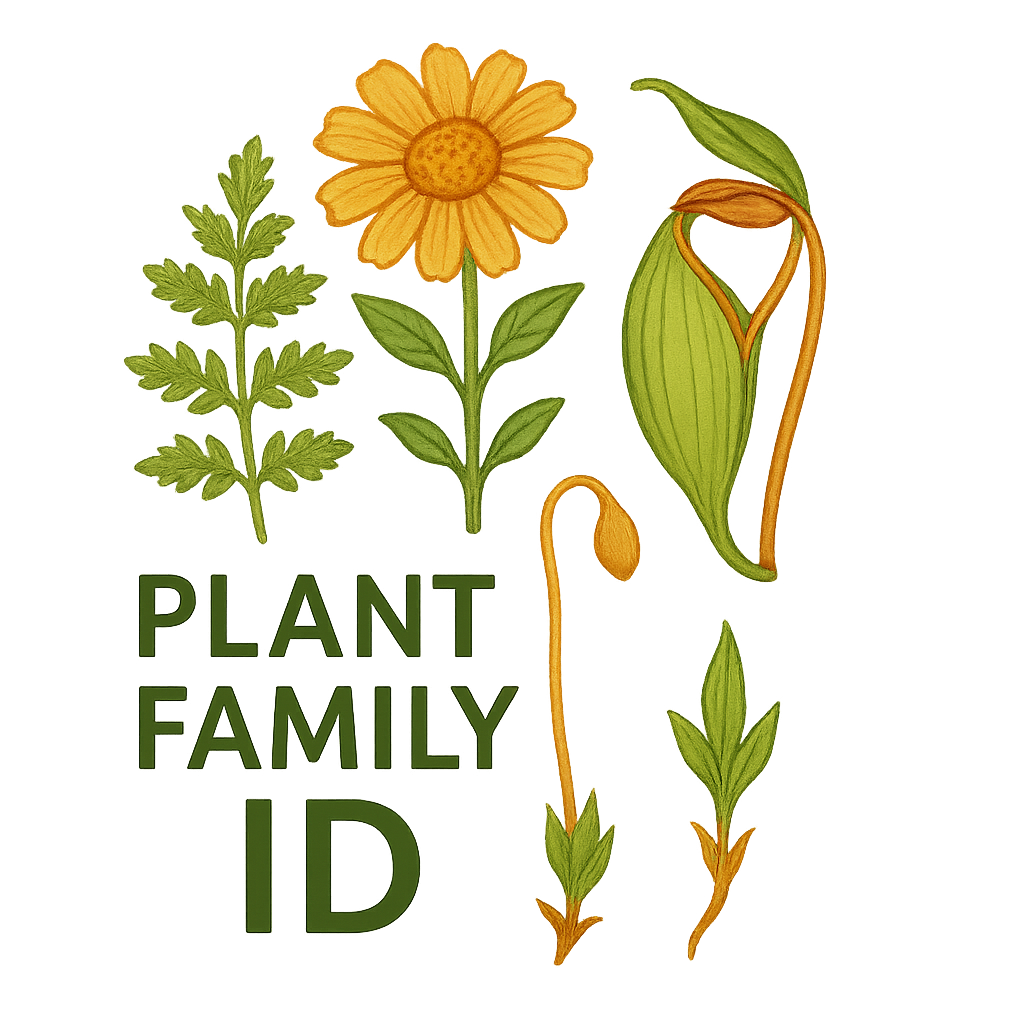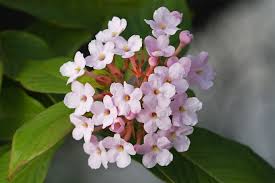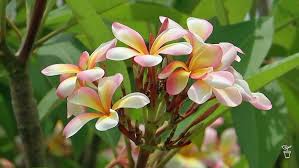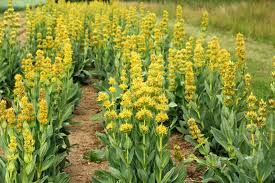Loganiaceae
Strychnine Family
Loganiaceae, the strychnine family, is a family of flowering plants in the order Gentianales. It consists primarily of trees, shrubs, and lianas found throughout the tropics and subtropics worldwide. The family is infamous for containing highly toxic indole alkaloids, such as strychnine and brucine, found in the genus Strychnos.

Overview
The Loganiaceae family comprises around 13 genera and 400-500 species, distributed across tropical and subtropical regions of the world. Members are predominantly woody plants, including large trees, shrubs, and climbing lianas, although a few herbaceous species exist (e.g., Spigelia, Mitreola). Historically, the family was much larger, but phylogenetic studies have resulted in many genera being moved to other families within the Gentianales or even other orders (like Buddleja to Scrophulariaceae).
The most notable characteristic of Loganiaceae is the presence of potent alkaloids in many species, making them extremely poisonous. Strychnos species yield strychnine, brucine, and compounds used in curare arrow poisons. Gelsemium species contain gelsemine, another highly toxic alkaloid. Due to this toxicity, few species have economic uses beyond traditional medicines (used with extreme caution) and poisons, although some Spigelia species are grown ornamentally.
Ecologically, they occupy various habitats within tropical and subtropical forests and woodlands.
Quick Facts
- Scientific Name: Loganiaceae
- Common Name: Strychnine family
- Number of Genera: Approximately 13
- Number of Species: Approximately 400-500
- Distribution: Pantropical and subtropical.
- Evolutionary Group: Eudicots - Asterids - Gentianales
- Toxicity: Many species are highly poisonous due to potent alkaloids.
Key Characteristics
Growth Form and Habit
The vast majority are woody plants: trees, shrubs, or lianas (woody vines). Herbaceous members are less common but do occur (e.g., Spigelia).
Leaves
Leaves are typically opposite, simple, and usually have entire (smooth) margins. A key feature is the presence of stipules, which are often located between the petioles (interpetiolar stipules) and may be well-developed, reduced to a ridge or line connecting the petioles, or sometimes fused into a sheath.
Inflorescence
Flowers are commonly arranged in cymes, which may be terminal or axillary, and sometimes grouped into larger panicle-like structures. Solitary flowers occur in some species.
Flowers
Flowers are usually actinomorphic (radially symmetrical), bisexual (though sometimes unisexual), and typically 4- or 5-merous (parts in 4s or 5s). Key features include:
- Calyx: 4 or 5 sepals, usually fused at the base.
- Corolla: 4 or 5 petals fused together to form a tube (sympetalous), with spreading lobes. The overall shape can be rotate (wheel-shaped), salverform (narrow tube, abruptly spreading lobes), or campanulate (bell-shaped). Colors include white, yellow, orange, pink, or red.
- Androecium: 4 or 5 stamens, alternating with the corolla lobes. The filaments are attached to the corolla tube (epipetalous).
- Gynoecium: The ovary is usually superior (positioned above the attachment point of other floral parts), typically composed of 2 fused carpels (sometimes 3 or 5). It usually has 2 locules (chambers) with axile placentation (ovules attached to a central axis), though variations exist. The style is usually single, sometimes divided at the tip.
Fruits and Seeds
Fruit types are diverse within the family. Common forms include a capsule (splitting septicidally or loculicidally), a fleshy berry (e.g., Strychnos), or a drupe (stone fruit). Seeds vary in number and may be winged or flattened.
Chemical Characteristics
This family is chemically defined by the presence of potent indole alkaloids. Notable examples include:
- Strychnine and Brucine: Found in Strychnos, these are powerful central nervous system stimulants and highly toxic convulsants.
- Curare alkaloids: Various complex alkaloids from South American Strychnos species are key components of arrow poisons that cause muscle paralysis.
- Gelsemine: Found in Gelsemium, this is another highly toxic alkaloid affecting the nervous system.
Field Identification
Identifying Loganiaceae involves looking for a combination of vegetative and floral features, keeping the potential toxicity in mind:
Primary Identification Features
- Opposite leaves with stipules: Look for leaves in pairs, and check carefully for stipules between the petioles or a distinct line connecting them.
- Woody habit (mostly): Most members are trees, shrubs, or lianas.
- Actinomorphic, sympetalous flowers: Flowers are radially symmetrical with fused petals, typically in parts of 4 or 5.
- Epipetalous stamens: Stamens (equal in number to corolla lobes) are attached to the inside of the corolla tube.
- Superior ovary: The ovary is located above the base of the petals and sepals.
- WARNING: Assume potential toxicity. Given the prevalence of potent alkaloids, avoid ingestion and handle with care, especially if identification is uncertain.
Secondary Identification Features
- Fruit type: Check for capsules, berries, or drupes, depending on the genus. Strychnos berries are often relatively large and globose.
- Habitat: Found in tropical and subtropical forests and woodlands.
- Flower shape and color: Note the specific shape (rotate, salverform, campanulate) and color of the corolla.
Seasonal Identification Tips
- Flowering/Fruiting Season: These occur during warmer/wetter periods in tropical/subtropical climates; timing varies greatly by species and location. Flowers are needed for definitive identification based on floral structure.
- Vegetative Season: Opposite leaves with interpetiolar stipules on woody plants are good clues year-round.
Common Confusion Points
Loganiaceae can be confused with other families in the Gentianales or those with opposite leaves and sympetalous flowers:
- Rubiaceae (Coffee Family): Also has opposite leaves and interpetiolar stipules, and sympetalous flowers. However, Rubiaceae always has an inferior ovary.
- Apocynaceae (Dogbane Family): Often has opposite leaves and sympetalous flowers, but typically lacks stipules (or has small finger-like stipules) and often exudes milky latex when broken. Many also have complex corona structures or specialized pollination mechanisms.
- Gentianaceae (Gentian Family): Shares opposite leaves and sympetalous flowers, but usually lacks stipules and often has parietal placentation (vs. mostly axile in Loganiaceae). Mostly herbaceous.
- Verbenaceae/Lamiaceae: Some have opposite leaves, but flowers are typically zygomorphic (bilaterally symmetrical), not actinomorphic.
Field Guide Quick Reference
Look For:
- Woody habit (trees, shrubs, lianas mostly)
- Opposite leaves
- Interpetiolar stipules (or line)
- Actinomorphic flowers (4 or 5 parts)
- Fused petals (sympetalous)
- Stamens attached to corolla tube (epipetalous)
- Superior ovary
- WARNING: POTENTIALLY TOXIC
Key Variations:
- Fruit type (capsule, berry, drupe)
- Flower shape and color
- Stipule development
- Presence of specific alkaloids
- Herbaceous vs. woody habit
Notable Examples
This family includes genera known for their potent chemical compounds and ecological roles:

Strychnos nux-vomica
Strychnine Tree, Poison Nut
Native to India and Southeast Asia, this tree is the primary source of the highly toxic alkaloids strychnine and brucine, concentrated in its seeds (nux vomica). The fruit is a hard-shelled orange-like berry. All parts of the plant are poisonous.

Strychnos toxifera & related spp.
Curare Vines
Several South American Strychnos species, typically large lianas, are sources of alkaloids used to make curare, a paralytic arrow poison used by indigenous peoples. The specific alkaloids block nerve impulses to muscles.

Gelsemium sempervirens
Carolina Jessamine, Yellow Jessamine
A climbing vine native to the southeastern United States, known for its fragrant, bright yellow, trumpet-shaped flowers. Despite its beauty and use as an ornamental, all parts of the plant are highly poisonous due to the alkaloid gelsemine. It is the state flower of South Carolina.

Spigelia marilandica
Indian Pink, Woodland Pinkroot
An herbaceous perennial native to the southeastern United States. It is notable for its striking tubular flowers, which are red on the outside and yellow inside, attracting hummingbirds. Unlike many Loganiaceae, it is sometimes grown as an ornamental. While traditionally used medicinally (as a vermifuge), it is also considered toxic.
Phylogeny and Classification
Loganiaceae is placed in the order Gentianales, alongside several other major families characterized by opposite leaves, sympetalous corollas, and often complex secondary chemistry. This order is firmly nested within the Asterid clade of Eudicots.
Molecular studies have significantly reshaped the understanding of Loganiaceae. Many genera previously included (like Buddleja, Nuxia, Retzia) have been transferred to other families based on DNA evidence. The current circumscription of Loganiaceae forms a well-supported monophyletic group within Gentianales, closely related to families like Gentianaceae, Rubiaceae, and Apocynaceae.
Position in Plant Phylogeny
- Kingdom: Plantae
- Clade: Angiosperms (Flowering plants)
- Clade: Eudicots
- Clade: Asterids
- Order: Gentianales
- Family: Loganiaceae
Evolutionary Significance
Loganiaceae is significant for several evolutionary aspects:
- Alkaloid biosynthesis: The family showcases the evolution of complex pathways producing potent indole alkaloids, likely as a defense against herbivory.
- Woody habit in Gentianales: While the order contains many herbs, Loganiaceae represents a predominantly woody lineage.
- Fruit diversity: The evolution of different fruit types (capsule, berry, drupe) within a single family reflects adaptations to various dispersal agents.
- Phylogenetic refinement: The history of Loganiaceae's classification exemplifies how molecular data has clarified relationships among flowering plant families.



